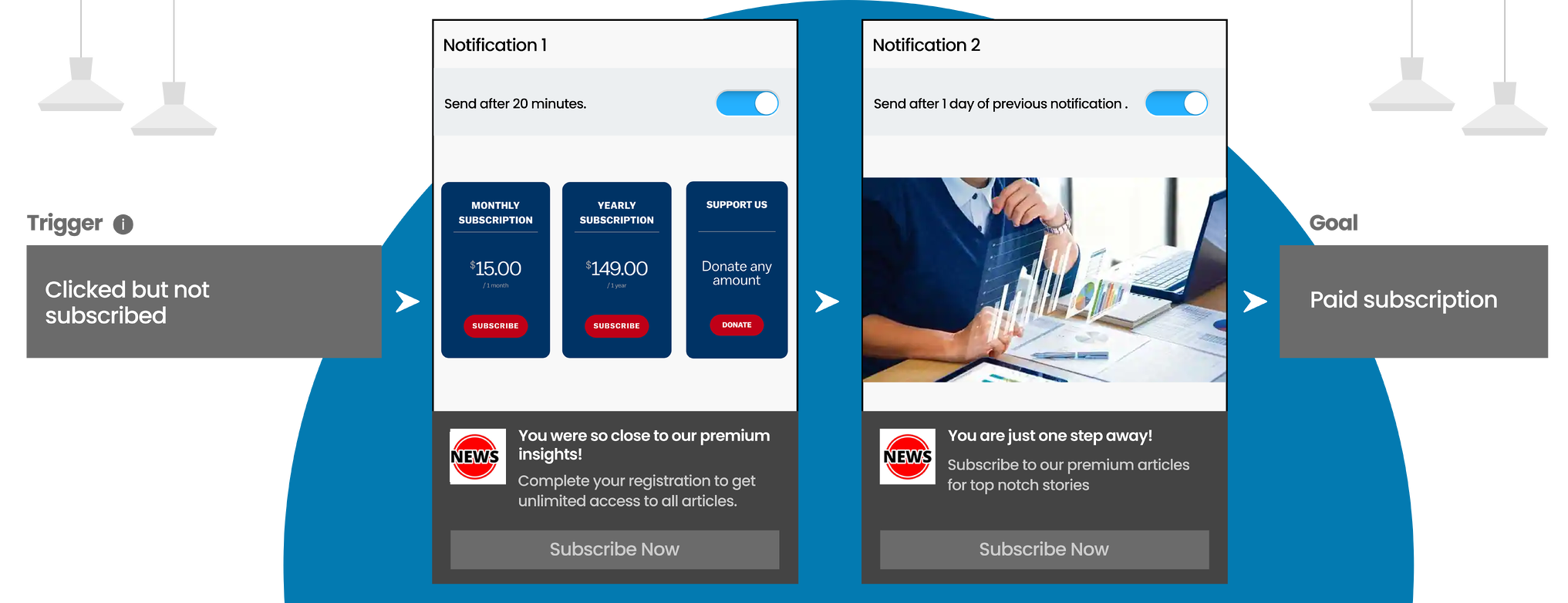Understanding Playbooks
What is a Playbook
A Playbook is a series of automated notifications to help you engage, retarget and upsell/cross-sell and hence drive sales. A playbook would be initiated based on user activity and will automatically send out notifications eliminating the need to manually create campaigns.
You can either create Playbook from scratch or use the Playbook templates to address your specific use cases.
Elements of a Playbook
A Playbook comprises of the following four main elements: -
- Trigger: - It's the activity on your website that will launch the Playbook. The trigger code should be fired on the desired user activity.
- Goal: - It's the event that the Playbook aims for and once this activity occurs, the Playbook would come be completed for the respective subscriber.
- Personalization Properties: - these are the properties used in the Playbook to personalize the notification content. This would be dynamic content and would have to be passed to iZooto along with the Trigger code.
- Notifications: - It's the series of notifications sent to the subscribers who have performed the Trigger activity. Up to three notifications can be sent corresponding to a particular trigger.
Understanding Trigger and Personalisation Properties
Triggers are the actions taken by the subscribers on your website and Personalisation Properties are the additional information about the trigger which can be used for personalizing the
notification to individual subscribers.
Let's take an example of an eCommerce store on which its subscribers have added a product to their carts. In this case, adding the product to the cart is a Trigger, and product details like the product name, image, price or URL are the Properties.
How does a Playbook work
When a subscriber performs the Trigger activity, the Playbook gets activated and starts sending the notifications to the subscriber. Playbook stops when the subscriber performs the Goal activity or once all the Notifications have been sent.
A few things to note:
1. If you plan to use personalization properties, it is important to validate if the right values are being passed over to iZooto. You can connect with your dedicated Customer Success Manager or drop a line to [email protected]
2. It is imperative that you define the goal code for every notification(wherever applicable). If this is not done, the end-user will keep on receiving the notification even though the desired activity might be complete.
Now let's build on the example we took to explain Trigger and Personalisation Properties.
When your subscribers add a product to their carts your goal is to make them complete the purchase. Playbook aiming to convert these abandoned cart users would consider adding a product to cart as the Trigger and the activity of completing the purchase as the Goal.
Properties of the product that was added to the cart like its name, image, price, or URL can be used to personalize the Notifications.

Playbook to recover abandoned subscriptions
A playbook comes to a halt on two conditions: -
- When the goal is achieved
- All the notifications have been sent
Playbooks are available only for web push notifications and not for app push notifications currently.
Updated almost 3 years ago
